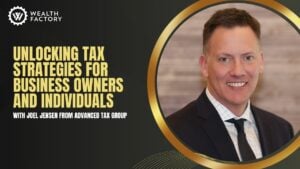Anyone who has a substantial amount of debt will attest to the stress and strain it can add to daily life. And, while it may feel extremely daunting right off the bat, with the right strategies and mindset, it’s possible to pay off your debts and get on the path to financial freedom. Discover proven strategies for paying off personal debt quickly that you can use to tackle your debt head-on and achieve your financial goals.
Understanding Personal Debt
Personal debt is a common issue that many people face at some point in their lives and is accumulated due to a number of means. While not all debt is deemed “bad”, high amounts of personal debt can become a stumbling block when trying to grow wealth, begin investing, make a large purchase, or provide stability for the future.
Defining Personal Debt
When we talk about personal debt, we’re referring to any money that an individual has borrowed from a lender. This can be for a variety of reasons, such as paying for college tuition, buying a car, or covering unexpected expenses. Depending on a number of factors, personal debt can be either secured or unsecured – meaning that it may or may not be backed by collateral.
According to forbes.com, in 2022 the average credit card per American household was roughly $5,500, an increase of over $600 from the previous year. It is generally the most common, and costly, type of personal debt, and most Americans have opened at least one credit card account by the time they are 20 years old.
Due to their convenience, it’s tempting to make purchases without thinking about the consequences, or growing balances which is why credit card debt can quickly spiral out of control. Personal and car loans also fall under the personal debt category and can often come with high-interest rates that make them difficult to pay off.
The Impact of Personal Debt on Your Financial Health
Carrying personal debt can have a negative impact on your financial, and emotional health. High-interest rates can lead to mounting debt that can quickly become unmanageable further impacting your credit score and making it difficult to get approved for loans or credit in the future.
Personal debt can cause stress and anxiety, especially if you’re struggling to make your payments each month. It can also limit your financial freedom and prevent you from achieving your goals, such as buying a house or starting a business.
It’s important to understand the impact that personal debt can have on your life and take steps to manage it effectively. This may involve creating a budget, prioritizing your debt payments, or seeking the help of a financial advisor or credit counselor.
Assessing Your Debt Situation
Debt can be overwhelming, but taking the time to assess your situation is the first step toward financial freedom. By creating a plan and sticking to it, you can pay off your debts and achieve your financial goals.
Creating a Debt Inventory
Before you can start paying off your debts, you need to know exactly what you owe, creating a detailed inventory of all the debts you owe is crucial. This includes credit cards, loans, and any other outstanding balances. Make sure to include the creditor, interest rate, and monthly payment for each debt.
Don’t forget to also include any debts that may not be top of mind, such as medical bills or outstanding taxes. Knowing the full extent of your debt will give you a clearer picture of what you need to tackle.
Prioritizing Your Debts
Once you have a list of all your debts, it’s important to prioritize them. Start by focusing on the debts with the highest interest rates. These debts will accrue more interest over time, making it harder to pay them off in the long run.
Setting Realistic Debt Repayment Goals
Now that you have a clear understanding of your debts and which ones to focus on first, it’s time to set realistic debt repayment goals. Decide how much you can realistically afford to pay each month towards your debts.
It’s important, to be honest with yourself and your financial situation. While it may be tempting to set aggressive goals, it’s better to set achievable goals that you can stick to. This will help you stay motivated and on track toward becoming debt-free.
Creating a timeline for paying off your debts can also be helpful. This will give you a clear end date to work towards and help you stay accountable to your goals.
Remember, paying off debt takes time and effort. But by creating a plan and sticking to it, you can achieve financial freedom and live a more stress-free life.
Strategy 1: The Debt Snowball Method
How the Debt Snowball Method Works
The Debt Snowball Method is a debt-repayment strategy that involves paying off your smallest debts first and then working your way up to the larger debts. This approach is based on the idea that small wins can give you the momentum and motivation to tackle larger debts.
It works like this:
Let’s say you have three debts: a credit card with a balance of $500, a personal loan with a balance of $2,000, and a car loan with a balance of $10,000. Using the Debt Snowball Method, you would make the minimum monthly payments on all three debts and then put any extra money towards paying off the credit card first. Once the credit card is paid off, you would then focus on paying off the personal loan, and finally the car loan.
Pros and Cons of the Debt Snowball Method
A major pro of the Debt Snowball Method is that it can help keep you motivated by providing celebrating each victory along the way. As your debts decrease, you’ll feel a sense of accomplishment and be more enthusiastic about continue paying off your remaining debts.
It should be noted though that this approach may not be the most financially efficient, as it doesn’t take into account interest rates. If you have high-interest debts, such as credit card debts, it may be more financially beneficial to focus on paying off those debts first, regardless of their balance.
Success Stories and Tips for Using the Debt Snowball Method
Many people have successfully paid off their debts using the Debt Snowball Method. To make it work, it’s important to stay committed to the process and to focus on each small win along the way. Here are some tips for using the Debt Snowball Method:
- Make a list of all your debts, including the balance and interest rate.
- Focus on making the minimum monthly payments on all your debts.
- Put any extra money towards paying off your smallest debts first.
- Celebrate each small win, such as paying off a credit card or personal loan.
- Use that momentum to keep going and pay off your remaining debts.
Remember, the Debt Snowball Method is just one debt-repayment strategy and it is more beneficial to find the strategy that works best for you and your financial situation.
Strategy 2: The Debt Avalanche Method
A second strategy to consider is the Debt Avalanche Method, that though similar to the Snowball Method, opts to focus on the interest rate of the debt vs the outstanding balance.
How the Debt Avalanche Method Works
The Debt Avalanche Method works by paying off your debts in order of highest to lowest interest rate.
For example, let’s say you have three debts:
- Credit Card A: $5,000 balance, 18% interest rate
- Credit Card B: $3,000 balance, 12% interest rate
- Personal Loan: $10,000 balance, 8% interest rate
Using the Debt Avalanche Method, you would focus on paying off Credit Card A first, because it has the highest interest rate. Once that debt is paid off, you would move on to Credit Card B, and then finally the Personal Loan.
Pros and Cons of the Debt Avalanche Method
Most times the Debt Avalanche Method is the most financially efficient way to pay off your debts because you’re tackling the debts that are costing you the most in interest charges.
It can, however, be more difficult to stay motivated because you may not see immediate progress, especially if your highest-interest debt has a large balance, it may take some time to pay it off, which can be discouraging.
Success Stories and Tips for Using the Debt Avalanche Method
There are plenty of people who have had great success and saved hundreds, if not thousands of dollars in interest, using the Avalanche Method. The key takeaway is that consistency and dedication are key.
Setting small, quickly-reached goals along the way will help with ongoing motivation.
For example:
If you have a $5,000 credit card balance with an 18% interest rate, set a goal to pay off $1,000 of that balance within the next three months. Celebrate each milestone and keep track of your progress to stay motivated.
Another tip to mull over is consolidating your debts into a single loan with a lower interest rate which can make it easier to manage your debts and potentially save you money on interest charges.
Final Thoughts
Whether you choose the Debt Snowball Method, the Debt Avalanche Method, or a combination of both, the key to paying off personal debt quickly is staying dedicated and motivated. Focus on the benefits of being debt free such as providing stability for your family, opening a business, legacy and estate planning, and so much more.
Use the strategies outlined in this article to take control of your finances and achieve your financial goals. Remember, debt typically doesn’t add up overnight, so it won’t be paid off overnight. It may take time and effort, but the reward is worth it in the end.

